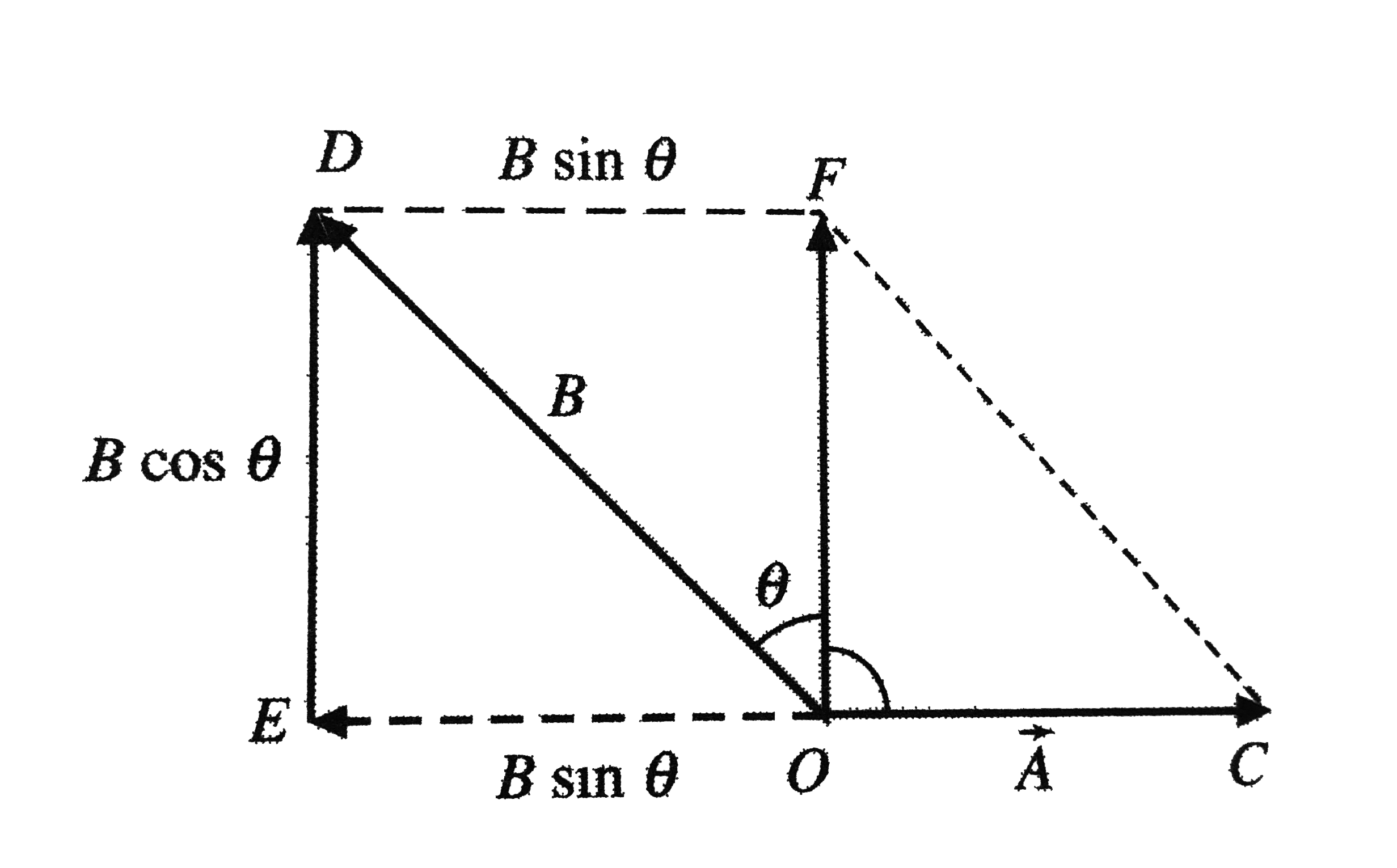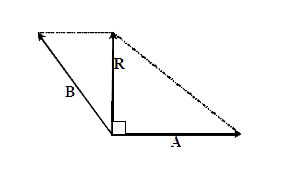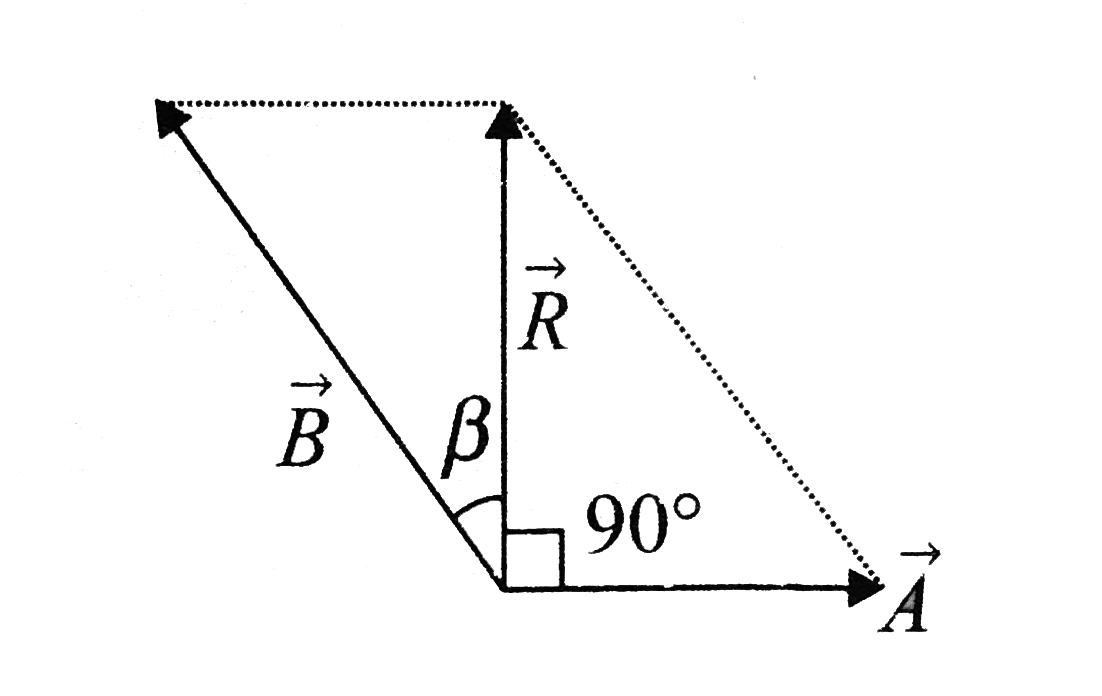The resultant of two vectors is perpendicular to first vector of magnitude 6N. If the resultant has magnitude 6√3N, then magnitude of second vector is
6√2N
12N
9√3N
6√3N
The correct Answer is:B
To solve the problem step by step, we will use vector resolution and the properties of right triangles.
Step 1: Understand the Problem
We have two vectors:
- Vector A with a magnitude of 6 N.
- The resultant vector R, which is perpendicular to vector A and has a magnitude of 6√3 N.
We need to find the magnitude of the second vector, which we will call vector B.
Step 2: Set Up the Equations
Since the resultant vector R is perpendicular to vector A, we can use the Pythagorean theorem. The relationship can be expressed as:
R2=A2+B2
Where:
- R=6√3 N
- A=6 N
- B is the magnitude of the second vector we need to find.
Step 3: Substitute the Known Values
Substituting the known values into the equation:
(6√3)2=(6)2+B2
Calculating the squares:
108=36+B2
Step 4: Solve for B^2
Now, isolate B2:
B2=108−36
B2=72
Step 5: Find B
Taking the square root of both sides:
B=√72
B=√36×2=6√2 N
Conclusion
The magnitude of the second vector B is 6√2 N.
---
We have two vectors:
- Vector A with a magnitude of 6 N.
- The resultant vector R, which is perpendicular to vector A and has a magnitude of 6√3 N.
Since the resultant vector R is perpendicular to vector A, we can use the Pythagorean theorem. The relationship can be expressed as:
R2=A2+B2
Where:
- R=6√3 N
- A=6 N
- B is the magnitude of the second vector we need to find.
Substituting the known values into the equation:
(6√3)2=(6)2+B2
Calculating the squares:
108=36+B2
Now, isolate B2:
B2=108−36
B2=72
Taking the square root of both sides:
B=√72
B=√36×2=6√2 N
The magnitude of the second vector B is 6√2 N.
Similar Questions
The resultant of two vectors →A and →B is perpendicular to the vector →A and its magnitude is equal to half of the magnitude of the vector →B. Find out the angles between →A and →B.
 .
.
View SolutionThe resultant of two vectors A and B is perpendicular to the vector A and its magnitude is equal to half the magnitude of vector B. The angle between A and B is -

View Solution
Knowledge Check
Resultant of two vectors →Aand→B is of magnitude P, If →B is reversed, then resultant is of magnitude Q. What is the value of P2+Q2 ?
A2(A2+B2)B2(A2−B2)CA2−B2DA2+B2
Resultant of two vector of equal magnitude A is
View SolutionThe resultant of two vectors →A and →B is perpendicular to the vector →A and its magnitudes is equal to half of the magnitudes of vector →B (figure). The angle between →A and →B is

View SolutionThe sum of the magnitudes of two forces acting at a point is 16 N. The resultant of these forces is perpendicular to the smaller force has a magnitude of 8 N. If the smaller force is magnitude x, then the value of x is (A) 2N (B) 4N (C) 6N (D) 7N
View SolutionThe resultant of two vectors at right angles is 5 N. If the angle between them is 120∘ and the resultant is √13 then the magnitude of vectors are
View SolutionA vector ¯¯¯Qwhich has a magnitude of 8 is added to the vector ¯¯¯P which lies along the X-axis. The resultant of these two vectors is a third vector ¯¯¯R which lies along the Y-axis and has a magnitude twice that of ¯¯¯P. The magnitude of ¯¯¯P is
View SolutionWhen two vectors a and b of magnitudes 'a' and 'b' respectively are added, the magnitude of resultant vector is always
View SolutionResultant of two vectors →Aand→B is of magnitude P, If →B is reversed, then resultant is of magnitude Q. What is the value of P2+Q2 ?
View Solution